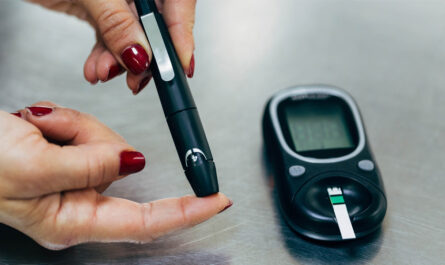By utilizing radioactive substances which mimic natural compounds in the body, doctors can trace their movement and location using advanced scanning equipment. This non-invasive technique has opened new windows into how our bodies function at the cellular level. Let’s take a deeper look into how radioactive tracers work and the amazing insights they provide.
What are Radioactive Tracers?
Radioactive tracers, also known as radiotracers or radiopharmaceuticals, are compounds containing radioactive isotopes. Common radioactive isotopes used include technetium-99m, fluorine-18, carbon-11, and iodine-123. These radioactive atoms are chemically attached to molecules that are similar to substances our bodies already use, such as glucose, fat, or vitamin B12. When injected or inhaled, the radioactive tracer mimics what the natural compound would do as it travels through the body.
Detecting Radioactive Signals
As the radioactive atoms in the tracer decay, they emit gamma rays or positrons. Specialized scanning machines like SPECT (single photon emission computed tomography) and PET (positron emission tomography) detectors can detect these emissions and use triangulation to map where the radioactive signal is coming from. By tracking the radioactive signal over time, doctors can see exactly where the tracer has accumulated and is working in the body. This provides a real-time view of physiological and metabolic processes like blood flow, oxygen use, and chemical interactions.
Applications in Medical Diagnosis
Bone Scans – Radioactive Tracers bound to compounds that collect in bone, like technetium-99m, are used in bone scans to detect bone abnormalities, fractures, infections, or cancers that have spread to the bones.
Cardiac Imaging – Tracers like thallium-201 or technetium-99m bound to compounds that mimic fatty acids are used to measure blood flow to the heart muscle in stress tests and identify areas of reduced flow that may indicate blockages.
Brain Imaging – Compounds like FDG (fluorodeoxyglucose) bound to radioactive fluorine-18 are used in PET scans to detect changes in brain glucose metabolism that can help diagnose conditions like brain tumors, epilepsy, or Alzheimer’s disease.
Cancer Detection – Radioactive tracers highlight cancer cells which tend to be more metabolically active. Tracers like FDG help locate primary tumors and cancer metastases throughout the body, aiding cancer staging.
Thyroid Function – Radioactive iodine isotopes concentrate in the thyroid gland, allowing assessment of thyroid health, nodules, hyper/hypothyroidism through scans like thyroid scintigraphy.
Insights into Physiology
Beyond diagnosing diseases, radioactive tracers have provided unprecedented insights into normal human physiology. Perfusion scans illuminate blood flow patterns through the heart, lungs, kidneys and more. Neurological tracers demonstrate intricacies of neurotransmitter and receptor activity in the brain. Tracers have helped unlock mysteries of how organs transport hormones, nutrients and waste. By observing tracer distribution over time, scientists gain insight into metabolic kinetics and enzyme/receptor dynamics across diverse organ systems.
Heading Towards Personalized Medicine
The evolving field of tracer-based molecular imaging holds potential to transform healthcare. With newly developed tracers, physicians can identify abnormal biological processes and disease-related changes at the molecular level. By pinpointing exactly where and how illnesses develop and progress, radioactive tracers may help deliver personalized, targeted treatment approaches tailored for individual patients. Emerging techniques like theranostic tracers, which can both image and deliver treatment to disease sites, could revolutionize precision oncology. As radiotracer technologies advance, we can expect to gain deeper understanding, earlier detection capabilities and more effective therapies. Radioactive tracers represent one of the most promising tools ushering in an era of personalized, predictive and preventative healthcare.
Since their advent in the 1950s, radioactive tracer techniques have expanded our view of human biology tremendously, helping diagnose countless illnesses and advancing medical research in immeasurable ways. With continued refinement, newly designed radiotracers hold enormous potential to advance health on both societal and individual levels. As a minimally invasive technique, radioactive tracers remain one of medicine’s greatest modern marvels – shedding light from within to illuminate invisible physiological workings and reveal insights that save lives every day. Their story of discovery is sure to continue unfolding with each new breakthrough that leads us closer to understanding, treating and preventing disease.
Note:
1. Source: Coherent Market Insights, Public sources, Desk research
2. We have leveraged AI tools to mine information and compile it




